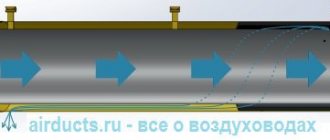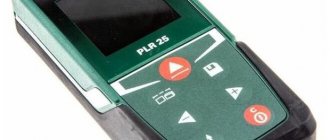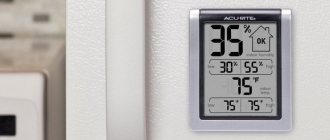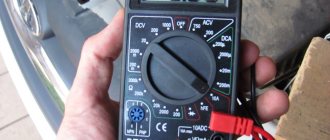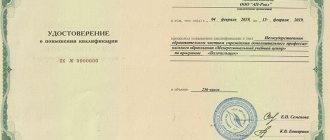Many modern industries cannot imagine their existence without such a science as geodesy. Developing with the times, geodesy has become firmly established in such industries as construction, agriculture, and industry, where there is a need to have accuracy when making measurements. In the process of geodetic surveys, instruments are currently used that make it possible to carry out a wide range of work in a short period of time - planning, repair, construction, starting with measurements and ending with setting out points by distance and angle in situ. There are ultra-precise instruments, the operation of which will be very difficult for a person untrained in this profession to understand. But more often you can find such devices that surveyors most often use in their work.
What does surveying equipment measure?
In simple terms, surveyors measure distances and angles. For these purposes, both ordinary tape measures and various tapes, as well as complex geodetic equipment can be used. What instruments does a surveyor use in his daily work? This:
Levels, profilers - measurement of excesses
Used to measure different heights. Its difference is also measured. The first ones are optical, digital and laser. Levels come with specific slats.
Theodolite - measuring angles
Also, measuring angles can be carried out with ordinary protractors and eckers. A compass is often used, a subtype of compass that can be used to measure the angle at which a line departs from the north direction of the magnetic meridian. As for the theodolite, it is a modern optical instrument that measures angles with high accuracy.
Navigation satellites and GPS technology - determining your current location
This technique is multifunctional and allows you to accurately, quickly and easily determine the coordinates of a certain point on the ground. She should also measure the length and divide the area into sections.
Levels
What instruments are used to measure distances on the ground and on flat surfaces? These are levels. Widely used for finishing work - laying tiles and hard wall and floor materials, for taking data about buildings and ground levels. Using the device, you can make precise markings, formulate the correct direction of walls, etc. Standard devices are equipped with an eyepiece and a scale; new ones use laser beams in their design. Levels can only be used in conjunction with tripods to increase the accuracy of readings and avoid shaking of the device during operation.
Standard level
Recommendations
- Buy measuring tools from reputable hardware stores. You can often find fakes on the market, which after several uses will become faulty.
- If you do not plan to use the device in the future, you can save money and rent the equipment for the required period.
- Check your instruments before taking important measurements. Even the most expensive equipment can fail. A routine check can serve you well.
- Do not leave battery-powered devices turned on. After a deep discharge, the battery may lose some of its capacity.
- It is not recommended to use battery-powered devices in severe frosts outside; low temperatures negatively affect the operation of any device.
Surveyor's equipment
So what instruments does a team of surveyors use in their work? Let's consider the main ones:
- Total station
- Level
- GPS technology
- Tripod
- Veshka
- Laser roulette
- Pipe and cable detector
Total station
It is the most popular and combined electron-optical instrument. Using a total station you can measure distance, height and horizontal angle. These are the types of devices that surveyors use in their daily work, and which can be seen on construction sites, garden plots and along highways. Very often, a tacheometer copes with all the necessary measurements and carrying out work on land surveying, setting out axes, and topographic survey. Because of this, they are the most versatile devices.
Level
Very often, the use of a tacheometer is associated with the operation of another device - a level, which allows you to control the height, level and verticality of various surfaces. The level measures the height of objects. There are electronic, optical, laser and other levels.
GPS technology
Helps determine location on the ground. Geodetic GPS equipment has a very small error in geodetic measurements and determines location with high accuracy.
Tripod
There is no simpler, yet more useful tool than a tripod. Very often, instruments are fixed on it, which must remain motionless while the surveyor is working. After all, sometimes you have to do your job not in the best conditions.
Veshka
Another simple device for carrying out geodetic work. As a rule, it is a high (up to 2 m) round stick. But it could be higher. At the top of the pole there is a reflector, which reflects the signal sent by the rangefinder, and a GPS receiver. It is at the top point of the device that the location of the required point is determined.
Laser roulette
A convenient and relatively inexpensive device in the surveyor’s arsenal. Used to measure short distances. It is mainly used indoors, since in outdoor conditions it is necessary to have a surface on which to point the tape measure beam. And very often in bright light conditions this point is not visible. Therefore, steel tape measures are still used by surveyors in their work. They are practical, but for long distances they cannot be used alone to measure the distance; they sag. In view of this, both versions of roulettes are in demand depending on the territory and location of the measurement.
What units of measurement are there?
Basic units: kilogram, meter, second, ampere, kelvin, mole and candela. Multiples are units that are an integer number of times larger than the basic unit of measurement of some physical quantity.
Interesting materials:
What load can a Balcony in a Khrushchev-era building withstand? What area does the Far East occupy? What kind of bedding can be used for snails? What weather does Pig like? What weather does perch like? How do animals benefit the forest? What assistance does the state provide to fire victims? What dishes can be used in the oven? What dishes should not be used in the microwave? Which PS Vita can be flashed?
Laser-based devices
A qualitative breakthrough in the evolution of instruments for measuring length was the emergence of sources of electromagnetic radiation in the optical range. In the second half of the 20th century, the first working examples of quantum generators were created, and since then lasers have continued to be improved. Devices for measuring length based on them were no exception - the military were again in the forefront. The first laser rangefinders were installed on tanks, used to target missiles, and were also used in space exploration.
Improvements in electronics and the emergence of digital computing methods have led to the creation of compact electronic meters for measuring length , both ultrasonic and laser. The world's first handheld laser device was produced by Leica in 1993.
Types of curvimeters for terrain
The road wheel is used for almost all types of repair work on the road or when laying communications. The device is able to determine the distance between selected places with an accuracy of a tenth of a centimeter. The device is easy to use; all that is required of the user is to adjust the height to suit his height and walk in the chosen direction. The product will show the length of the surface and detect every pothole and hole, which is very important during construction. The counter is installed in two places: at the top, right next to the handle, or at the bottom, next to the wheel.
There are two types of devices in stores:
- Using a mechanical counter;
- With electronic element.
Mechanical
This option consists of rounded cylinders, along their periphery are numbers from 0 to 9. This design is similar to the one installed in a car to display the distance traveled. There is a special button on the side; by clicking on it, a person will quickly reset the information. Early readings are instantly erased and zero marks appear.
Previously, models were produced that were capable of operating at a distance of up to 1 km, which is why the readings had to be constantly recorded so as not to lose count. Since the product only displays meters, the numbers were updated when the value reached 999. Therefore, for long-distance measurements, they always took a piece of paper and a pen, or simply bought a more advanced model that could record up to 10 km.
When a person takes measurements on a flat surface, it is necessary to select a product that has a large wheel diameter. This is more practical because, due to the length, the device rolls faster and the hand gets less tired. The diameter of such a wheel is 31.847 cm. Therefore, as soon as the wheel makes a full revolution, one meter is counted. This design is convenient to use, since if the counter breaks down, the user can continue working, counting the values in his head.
Electronic
The equipment is equipped with an electronic counter and a convenient display that more accurately displays information on the screen. The only drawback of the model is its dependence on batteries; without their power, the device simply will not be able to function. When you plan to take measurements in the field, it is better to give preference to the mechanical option, or stock up on batteries, otherwise the meters traveled will not yield results. The advantage of such models is that they have built-in memory. In addition, the user can switch from miles to metric units of measurement or vice versa. Also, some devices can independently calculate the area of the measured area.
Regardless of the model chosen, the devices have the same body, which can be easily folded for maximum comfort during transportation. The height is adjusted individually for each worker. The actual wheel diameter varies, some may have a high diameter and others may not. It is important to remember that the smaller the wheel, the easier it is to transport the curvimeter.
The most important thing to consider when choosing is what terrain the device will be used on, since the size of the road wheel and the availability of special capabilities depend on this. In addition, this will determine what kind of surface will be installed: smooth, which is designed for asphalt roads, or studded, to provide maximum comfort on unpaved or slippery terrain.
11.2. Mechanical distance measuring instruments
Mechanical instruments for directly measuring distances include steel surveying tapes and tape measures.
Land surveying tapes are made from steel strip 15–20 mm wide and 0.4–0.5 mm thick. They are designated LZ-20, LZ-24, LZ-50 in accordance with the length of 20, 24 or 50 m between the end strokes of the tape at a tension of 98 N. The ends of the tape (Fig. 11.1) are equipped with handles; opposite the end strokes, cutouts are made in the tape for securing the tape with pins in a taut state on the surface of the earth. The meter divisions of the tape are secured with digitized plates, the half meters are marked with rivets, and the decimeter divisions are marked with round holes. Reading accuracy t ≈ 1 cm.
When not in use, the tape should be wound around the frame in the form of a ring. Complete with LZ type tape, a set of 6 or 11 metal pins is used.
Roulettes are manufactured by many foreign companies under various names. In Russia, tape measures of the 2nd accuracy class OPK2-20 ANT/1, OPK2-30 ANT/1, OPK2-50 ANT/1 are produced. They are made of steel tape 1 cm wide and 20, 30 and 50 m long, respectively. The tape is covered with a protective film, and a linear scale with a division value of 1 mm is applied to it. The reading accuracy on such a scale is t ≈ 0.2–0.5 mm.
A tape measure of the 3rd accuracy class OPK3-20 ANT/10, 20 m long, is characterized by a scale with a division value of 10 mm (reading accuracy on the scale t ≈ 2–5 mm). In OPK2 and OPK3 roulettes, the tapes are wound on a frame. Pins are not supplied with the tape measures.
Read also: How to disassemble a Bosch sensixx b4 iron
Note. In the roulette codes, letters and numbers indicate: O – open body (fork or cross); Z – closed body; P – flat tape (section not in the shape of a gutter); K – exhaust ring; 2 or 3 – accuracy class; A – removal of the scale from the beginning of the tape; N or U – stainless or carbon steel; T – scale strokes are etched; /1 or /10 – in the denominator of the fraction, the scale division value is 1 or 10 mm.
Rice. 11.1. Land surveying tape LZ-20:
a – meter and decimeter divisions; b – on the frame; c – studs
The working tension of all LZ tapes and tape measures is 98 N.
Since surveying tapes and tape measures are not fundamentally different, in the future we will use their general name - measuring tapes.
Comparing measuring tapes is a comparison of the working length of the tape with the length of the working standard. Tapes in operation are annually certified (they are compared with the issuance of a document for permission to use) in the metrological supervision laboratory. The actual length of the working belt is increased
Accurate measurement of distances, and especially non-straight sections, is necessary in many areas of activity. The construction of civil and industrial facilities, road work and even the assessment of distances on a topographic map is carried out using a special measuring device - a curvimeter.
Operating principle of the device
The main working part of the device is a road wheel, which is rolled along the measured path. The impeller is calibrated, and the wheel revolution is recorded by a counter. Next, the number of revolutions is multiplied by the circumference of the wheel and the distance traveled is calculated .
For ease of use, the device is equipped with a comfortable handle that adjusts to the height of the operator. The counter can be mechanical or electronic. Electronic meters, equipped with elementary or advanced calculators, immediately show the distance traveled, convert units of measurement, and save intermediate and final results.
Benefits of use
The device is simple and easy to use. The “road wheel” allows for high-precision measurements where the terrain has quite complex terrain. The device costs less than other measuring equipment, and gives reliable results.
Unlike a tape measure or rangefinder, a curvimeter allows you to measure large areas in a short time and with minimal effort. The presence of a counter frees you from the need to constantly make notes about the results obtained, as is the case when using a roulette.
To choose the right type of device, you need to consider the purpose for which the road curvimeter is needed. Analog models are cheaper, and digital ones help make the measurer’s work easier. In addition to the counter, the digital curvimeter has a display that reflects the actions and calculations performed by the computer. The device can measure not only when moving forward, but also backward. The choice of the type of curvimeter depends on the tasks at hand and the financial capabilities of the buyer.
Laser roulettes
Even entry-level models are extremely compact, allow instant measurements, are highly accurate and come with additional features to help you easily calculate area and volume. Basically, inexpensive devices are designed for indoor use and are adapted to measure distances up to 20 m. In most cases, their capabilities are sufficient for personal use.
Devices for professional use require operation in open spaces and are manufactured in a dust and waterproof design. When using special reflective targets, their range can reach 250 m. More complex devices are equipped with tilt sensors, Bluetooth connection , large memory for saving received data, an impressive set of programs for indirect measurements, serial measurement function and other options.
Originally posted 2018-03-28 15:28:56.
Voting for the best road curvimeter
Which travel curvimeter would you choose or recommend?
RGK Q64
100.00 % ( 1 )
NEDO 703113
0.00 % ( 0 )
ADA Wheel 1000 Digital
0.00 % ( 0 )
RGK Q318
0.00 % ( 0 )
RGK Q159
0.00 % ( 0 )
Rosdortech KP-230M
0.00 % ( 0 )
Nestle 12014000
0.00 % ( 0 )
RGK Q32E
0.00 % ( 0 )
BOSCH GWM 32
0.00 % ( 0 )
RGK Q16e
0.00 % ( 0 )
MEGEON 80910
0.00 % ( 0 )
RGK Q8
0.00 % ( 0 )
Light versus ultrasonic
Ultrasonic rangefinders operate on the same principle as pulsed electromagnetic rangefinders. Only their reception and transmission unit does not contain a laser and a photodetector, but a loudspeaker and a microphone. And it emits not a light flux, but a sound wave. The electronic digital module measures the time elapsed from the sending of the ultrasonic pulse to the returned echo, and calculates the distance to interference in the signal path.



